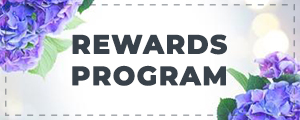| Dicentra spectabilis 'Hordival' | USDA Zone: 3-9 |
Valentine Bleeding Heart features delicate nodding cherry red heart-shaped flowers with white centers dangling from the stems from late spring to early summer. Its ferny compound leaves remain grayish green in colour throughout the season.
Much like the species, this variety also grows quickly to form a robust clump of deep green foliage topped with arching flower stems in late spring. When the foliage is emerging in spring, it has a tinge of pretty purple color to it.
The flower stems on this variety are deep red and the large, puffy heart-shaped flowers are bright red with a white tip. They dangle romantically from the leafless stems over a period of many weeks. The plant remains attractive after it is finished blooming until it goes summer dormant.
Valentine Bleeding Heart is recommended for the following landscape applications;
- Mass Planting
- Rock/Alpine Gardens
- Border Edging
- General Garden Use
- Container Planting
Bloom Time: Late Spring, Summer
Common name: Old-Fashioned Bleeding Heart, Common Bleeding Heart.
|
Key Feature
|
Light Needs | Landscape Uses |
 |
 |
|
|
|
|
| More About Valentine® Bleeding Heart |
| Height: 30 inches |
Spread: 30 inches |
Flower Colour: Red Shades |
|
Bleeding Hearts are one of the oldest but still irreplaceable perennials in cultivation. They form large, bushy clumps of powdery-green foliage comprised of cut or lobed leaves on fleshy stems. In late spring, chains of puffy heart-shaped flowers dangle beneath the arching, leafless stems. These racemes make delightful additions to fresh bouquets, lasting about 2 weeks in a vase. After putting on this fantastic display, Old-Fashioned Bleeding Hearts usually go dormant until the following spring. However, if plants are kept well-watered during the spring, dormancy may be delayed until late summer or early fall. Other bushy perennials such as Hosta, Geranium, or Sedge should be planted nearby to fill in the resulting gaps. Note that when grown in a container, it may not perform exactly as indicated on the tag - this is to be expected. Also note that when growing plants in outdoor containers and baskets, they may require more frequent waterings than they would in the yard or garden. Be aware that in our climate, most plants cannot be expected to survive the winter if left in containers outdoors, and this plant is no exception. NOTE: Some flowers and plants may be harmful or poisonous to people or pets if touched or ingested. If you require more information before placing an order, please let us know in advance. |











